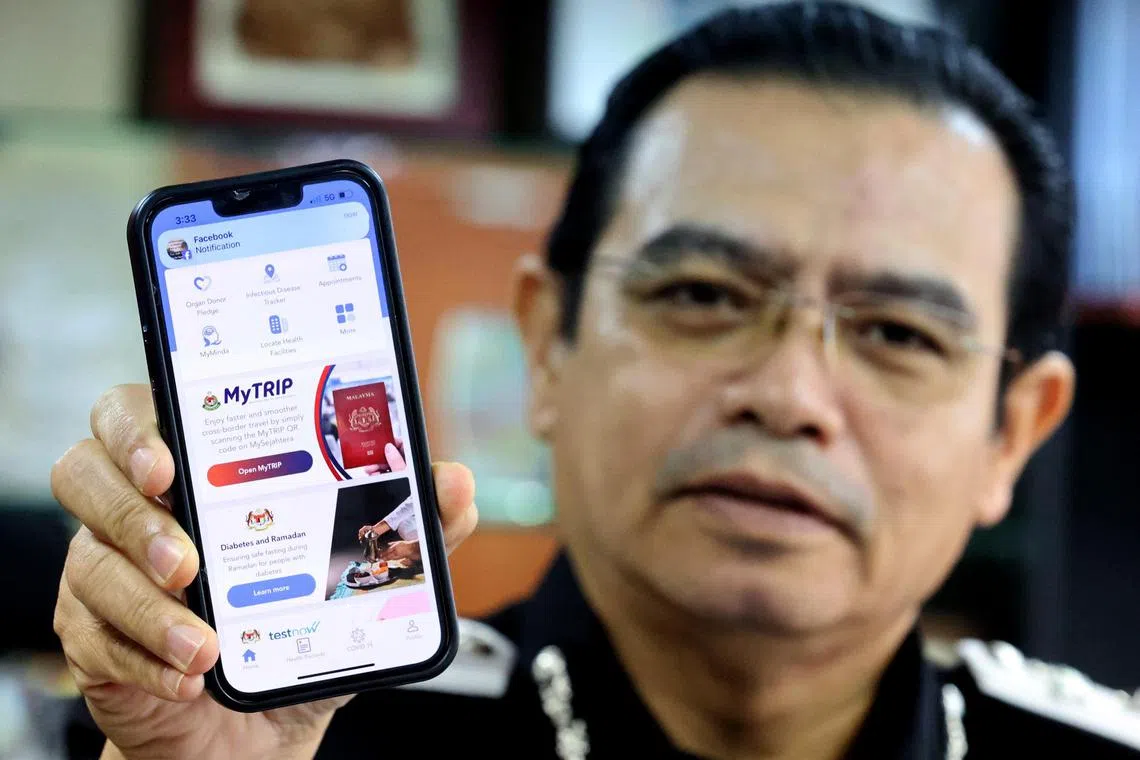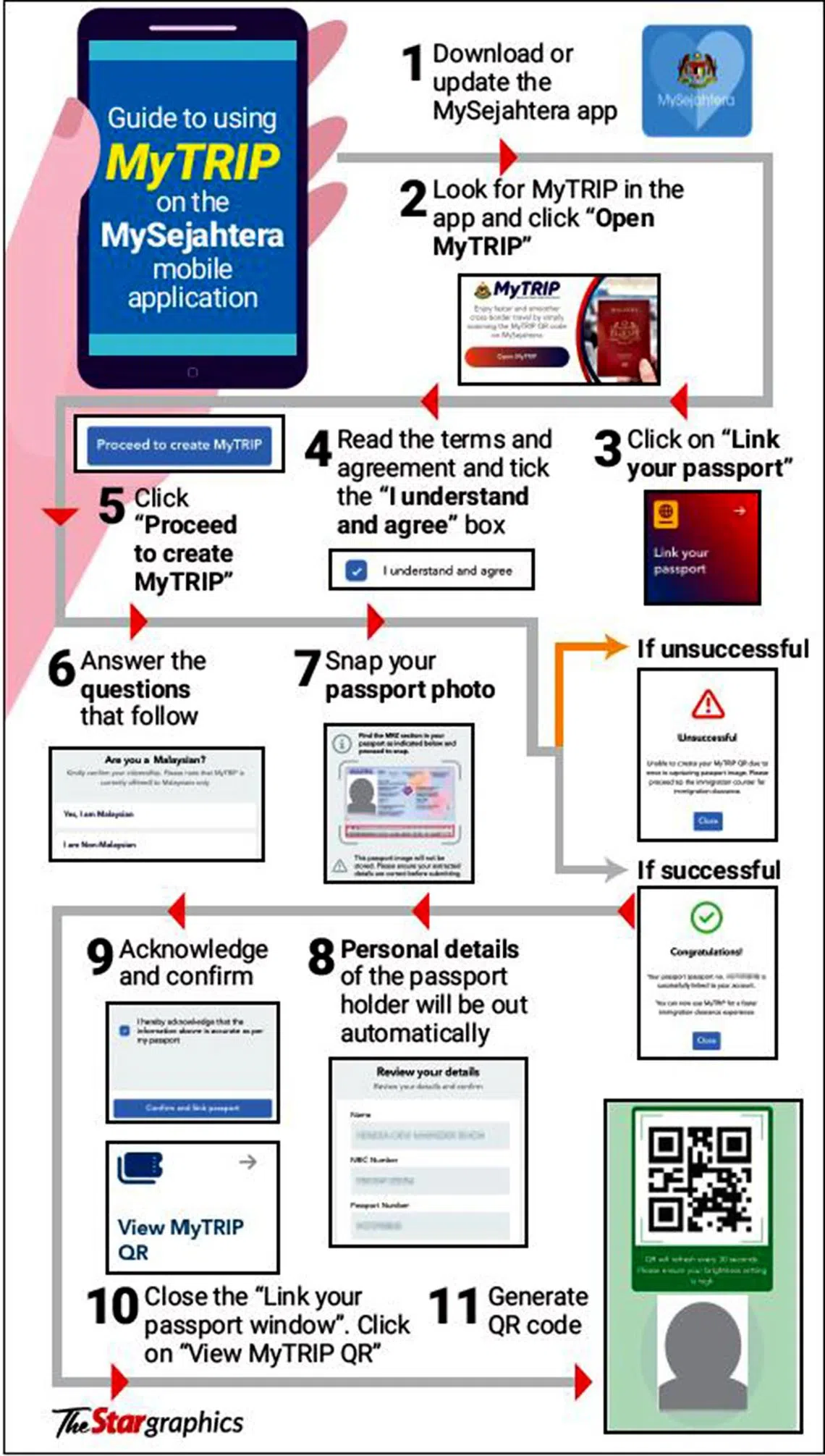Don’t fear the QR code, Johor immigration dept tells those using land checkpoints
Sign up now: Get ST's newsletters delivered to your inbox

Those travelling via bus or motorcycle can try out the QR code system at Kompleks Sultan Abu Bakar using the MyTRIP function, which is embedded in the MySejahtera app.
PHOTO: THE STAR/ASIA NEWS NETWORK
Follow topic:
JOHOR BAHRU – Those travelling between Johor and Singapore need not worry about the new QR code system for immigration clearance at the two land checkpoints, said the Johor Immigration Department.
Immigration Department acting director Mohd Faizal Shamsudin said that although the proof-of-concept period begins on June 1, the MBike clearance system for motorcyclists, existing e-gates and manual counters will still be available for travellers to use.
Members of the public “do not have to panic as they can continue to clear immigration as usual, without having to use the new QR code system”, he told The Star.
“Of course, we encourage travellers to register and try out the new system during the proof-of-concept period, but it is not compulsory for them to do so until we announce the deadline date,” he said.
He added that during the proof-of-concept period, the Immigration Department will be testing a few QR code systems for all modes of transport.
For a start, those travelling via bus or motorcycle can try out the QR code system at Kompleks Sultan Abu Bakar (KSAB) at the Second Link using the MyTRIP function, which is embedded in the MySejahtera mobile app, he said.
“They have to update their MySejahtera app first. Once they do that, they can link their passport through MyTRIP and generate a QR code, which will then be scanned to clear immigration.
“The QR code will only be valid for 30 seconds as part of its security feature. If they miss it, they have to generate a new one,” he said, adding that users are also not allowed to take a screenshot of the QR code generated.
Mr Mohd Faizal said that during the proof-of-concept period, KSAB will have six dedicated lanes for bus passengers who want to try out the QR code system, and 10 for motorcyclists.
“There will be four QR code scanners installed at the exit lanes and another two at the entry lanes for buses. For motorcycles, five lanes will be made available for the entry and another five for the exit,” he said.
At the Bangunan Sultan Iskandar (BSI) land checkpoint, at least two other mobile travel apps will be made available for the public to download from Google Play Store, he added.
“We are using different apps so that we can make a comparison between several vendors, including in terms of pricing and system efficiency. We will then choose the best one.
“The other apps will be made available soon, and there are at least two different vendors involved. For now, only those travelling by bus can use the QR code system at BSI,” said Mr Mohd Faizal, adding that 10 scanners will be installed at the bus exit lanes and another 10 at the entry lanes there.

fdcode31 - The Star Publication pix - QR code scanners.
GRAPHIC: THE STAR/ASIA NEWS NETWORK
On concerns whether the new QR code system will cause issues, especially for those without a mobile phone or with a weak internet connection, he said the department will be working with the Malaysian Communications and Multimedia Commission to boost connectivity at both BSI and KSAB to ensure that travellers can use the system smoothly.
“Anyway, we have manual counters that the people can use. We also welcome the public to give their feedback on the system and the apps through our social media platforms,” he said, adding that the platforms have already started posting videos and information about the QR code system.
For the 40,000 motorcyclists who have MBike passes, Mr Mohd Faizal said the passes also have QR codes, and the authorities will see if it is possible to integrate them.
“Once everything is fully implemented, the MBike system will be phased out eventually,” he said, urging the public to be patient during the proof-of-concept period. THE STAR/ASIA NEWS NETWORK

